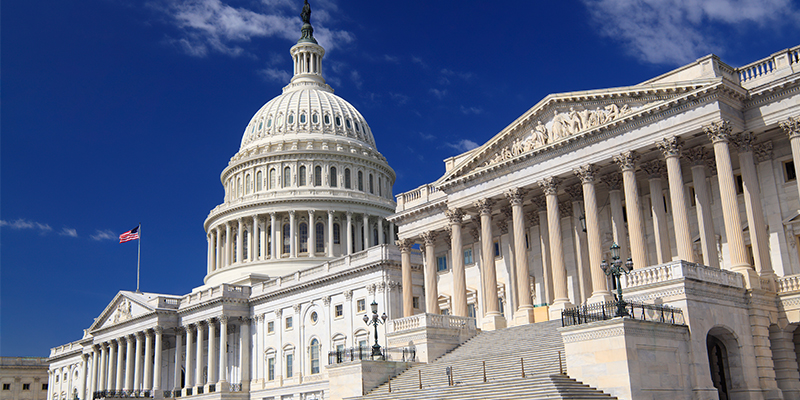In the movie Apollo 13, there is moment when NASA engineers are arguing over what they need to do to save the lives of the astronauts in their capsule, which had been damaged by an explosion. In that scene, NASA engineer John Aaron realizes that the crew will not make it back safely because they will run out of electrical power – a limiting factor that the other engineers had failed to consider. “Power is everything” he says, adding that the crew must power down all systems until the point of reentry. Flight Director Gene Kranz tells the assembled engineers that their mission has changed from going to the moon to one of getting the astronauts back alive. Ed Harris, playing Kranz, ends the scene with “Failure is not an option.”
For the Biden administration and congressional Democrats, it is the legislative calendar, and specifically the Senate calendar, that is the limiting factor in getting their ambitious domestic agenda enacted. Earlier this year, Senate Majority Leader Charles Schumer (D-NY) set forth the legislation he wanted passed by summer. In addition to President Joe Biden’s charge to pass a major infrastructure bill before August, Democrats wanted to pass legislation on gun control, healthcare and voting rights. In a floor speech, the senate majority leader also vowed to consider legislation to fight climate change, boost domestic manufacturing, and reform immigration. Schumer even used the “failure is not an option” tagline from Apollo 13.
Schumer’s timing was important because of the slim majority held by Democrats in the House of Representatives. With only four more seats than the Republicans, and with the party controlling the White House usually losing seats in midterm congressional elections, Democrats fear they may lose control of the House in 2022, which would effectively end their ability to advance an agenda. In the fall months as the election nears, moderate and centrist Democrats would be reluctant to cast very difficult votes on increasing taxes and other measure that would not play well with the voters back home in their districts.
Biden and the Democratic congressional leadership had reason to be confident, based on the Senate parliamentarian’s ruling earlier this year that “budget reconciliation” could be used more times than previously thought. The rules of the Senate require 60 votes to overcome a Senate filibuster of a bill – a delaying tactic used by the minority party to extract concessions on legislation. A budget reconciliation measure, however, is protected from the filibuster and can pass with a simple majority. With 50 Senate Democrats and the vice president casting the deciding vote in cases of a tie, and in the absence of the filibuster, a unified Democratic majority could overcome any Republican opposition, 51 to 50.
The White House and Democrats had used budget reconciliation once already to pass Biden’s coronavirus and economic relief bill, the American Rescue Plan, in March. With the parliamentarian’s ruling, they believed reconciliation could be used two more times. If they could not get a bipartisan deal on infrastructure with Republicans, an amended budget reconciliation measure could be used to enact their vision for infrastructure and a green-energy transformation financed through increased corporate taxes. A second reconciliation bill could be used in the fall to expand the social spending programs and raise taxes on businesses and higher income taxpayers.
Of course, on some issues the White House and Senate Democratic leadership would have to negotiate with centrist senators like Joe Manchin (D-WV), Kyrsten Sinema, and others to ensure their support. Manchin for one had already publicly signaled his independence from the White House and the Democratic party leadership on major issues, including voting rights and corporate taxes. Once agreement was reached among Democrats, however, Republicans in the Senate would not be able to prevent passage of legislation.
A rude awakening occurred early this month, however, when the Senate parliamentarian issued a clarification of the prior ruling, this time issuing an opinion that additional reconciliation measures would be allowable only in extraordinary unforeseen circumstances, and imposing other requirements that effectively eliminated its use for this fiscal year. Democrats would be limited to one reconciliation measure in the fall, for next fiscal year. The Senate parliamentarian’s ruling was the political equivalent of the explosion on Apollo 13.
Democrats are deeply divided on how to proceed, and are keenly aware of the time constraints and impending “summer swoon” for legislation. As many Senators will tell you, bipartisanship is difficult, and it takes time. The Senate recently passed a bill to boost science and technology research for the U.S. to compete with China a month after bipartisan agreement had been reached. Increasing Republican votes often loses Democratic votes. Centrist and moderate Senate Democrats want a bipartisan deal on infrastructure, but more progressive Democrats in both the House and Senate are threatening to reject the latest compromise measures.
The alternative for Biden and congressional Democrats is to leave most of the elements of their infrastructure, climate change, and social program spending for the fall, using reconciliation to pass what would be a $4 trillion to $5 trillion bill. At the same time, Congress will be faced with increasing the limit on the national debt limit, now approaching $30 trillion – all this while also voting for major tax increases. Not a pleasant scenario for moderate Democrats who support many, but not all, of these initiatives, and a major gamble by progressives to achieve the majority of their policy aims in the first year of Biden’s presidency. It seems that for all parties, the time is short.








